SYRACUSE 4B successfully launched by Ariane 5’s final space push
As a payload passenger with the recent and final launch of the Ariane 5 on July 6th., the SYRACUSE 4Bcommunications satellite, built by Airbus and Thales Alenia Space, has been successfully sent to orbit from the Guiana Space Center, Europe’s Spaceport in Kourou, French Guiana — this was the last launch of Ariane 5, the European heavy launcher.
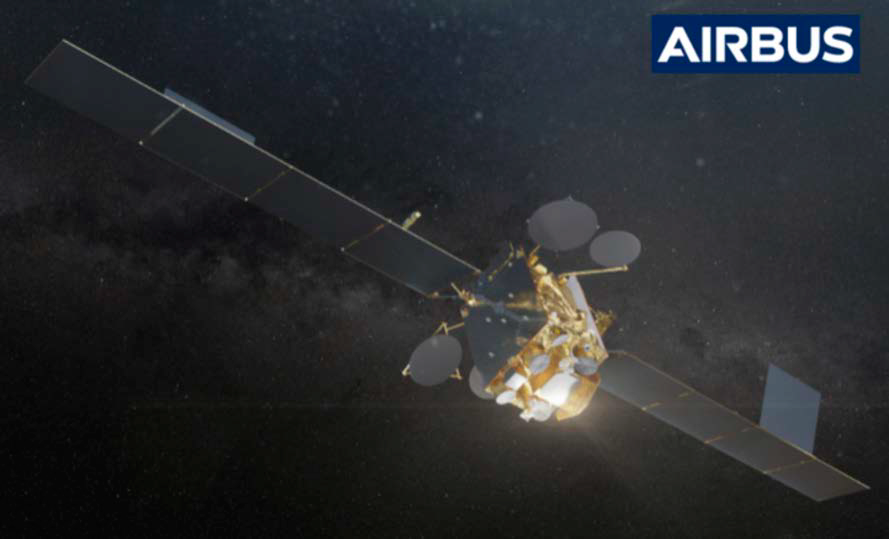
SYRACUSE 4B, along with SYRACUSE 4A already on-orbit, constitutes the space segment of SYRACUSE IV, the fourth generation, secure, MILSATCOM system for the French Armament General Directorate (DGA – Direction Générale de l’Armement), the French Air and Space force and the French Space Command, built by the industrial consortium formed by Airbus Defence and Space and Thales Alenia Space.
SYRACUSE 4A and 4B will deliver increased capacity and enhanced functionality for the French Armed Forces, including higher throughput and flexibility, along with a broader coverage area.
The increased flexibility will ensure the satellites can meet the needs of forces deployed anywhere in the coverage area, while also efficiently managing its X- and Ka-band resources.
SYRACUSE 4B, built on Airbus’ Eurostar E3000 platform, in its full-electric variant and equipped with on-orbit proximity surveillance, is embarking the same payload as SYRACUSE 4A, built by Thales Alenia Space with key components provided by Airbus.
SYRACUSE 4B features critical technologies such as anti-jamming, to guarantee service continuity and resilience, cyber-defense and data encryption technologies.
In the frame of the global SYRACUSE co-contract, Airbus is responsible for the SYRACUSE 4B satellite. Thales Alenia Space was responsible for SYRACUSE 4A satellite, as well as both payloads with key component provided by Airbus.
The satellite, a true example of pan- European industrial cooperation, will guarantee French sovereignty, while also being able to support operations led by NATO and other allied nations.
“Observation, signal intelligence, space situational awareness, and of course secure communications across key theaters of operation, are paramount for a nation’s autonomy and freedom of action. Airbus is proud to be a trusted partner of the French Armed Forces: thanks to SYRACUSE 4B, and other programs, we support our national ambitions and capabilities in all these fields, today and in the decades to come.” — Jean-Marc Nasr, Head of Space Systems, Airbus.
This satellite is to serve France’s sovereignty needs by connecting the nation’s armed forces that are deployed on operations
Aurora develops adaptive control architecture for USVs
Aurora Flight Sciences, a Boeing company, is developing and testing machine learning-based, introspection technologies aimed to enable physical systems — in this case ships — to adapt their control laws as they encounter uncertainties or unexpected events.
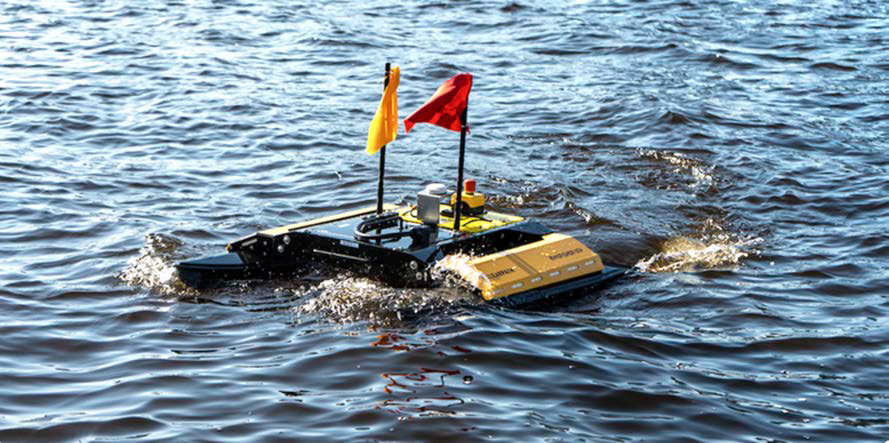
The work is part of a seedling program titled “Fast Adaptation and Learning for Control
Online” (FALCON) to support the Defense Advanced Research Projects Agency’s (DARPA) Learning Introspective Control (LINC) program.
Aurora’s FALCON solution is a platform-agnostic, computationally lightweight online learning and adaptive control architecture that delivers fast convergence for changing nonlinear, nonparametric dynamics in cyber-physical systems. It candetect destabilization quickly and reconstitute control online for safe and continued operation.
In response to changing circumstances, FALCON recalculates safe reachable operating limits in real time while providing guidance and situational awareness to the operator, whether that operator is human or an autonomous controller.
This spring, Aurora implemented their proof-of-concept control architecture on 1.5-meter-long unmanned surface vessels (USV) and began testing in the Charles River in Cambridge, Massachusetts.
The USV compensates for the currents and waves, which are large relative to the size of the vehicle.
The first program demonstration examines the USV’s ability to reconstitute control after a significant reduction in control effectiveness of one thruster, similar to the disturbance induced by rudder lock in larger vessels.
The program team also includes the Massachusetts Institute of Technology (MIT) Aerospace Controls Laboratory led by Professor Jonathan How, and the MIT Marine Autonomy Laboratory (PavLab) led by Dr. Michael Benjamin.
The MIT PavLab, located in the MIT Sailing Pavilion on the Charles River, is providing the USVs, which serve as a rapidly adaptable test platform for FALCON.
Work on the FALCON program is ongoing, with future demonstrations planned to investigate additional unpredictable disturbances, such as large wind loading and fuel slosh effects.
“The ability to test USVs directly on the Charles River enables a rapid development and test cycle that advances our program efficiently. With these types of resources and collaborations, we can apply the latest methods from the adaptive control, machine learning, and autonomy fields.”
— Dr. Max Greene, controls researcher, Aurora
CesiumAstro awarded million$ USAF contract to demo SATCOM on MQ-9A Reaper
CesiumAstro has been awarded a contract led by AFWERX, the innovation arm of the U.S. Air Force (USAF), through the Tactical Funding Increase (TACFI) program.
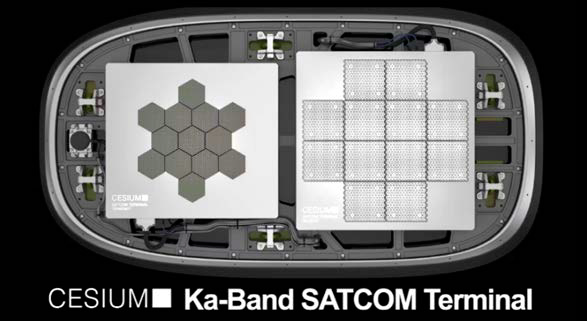
CesiumAstro will build, integrate and demo the company’s satellite communications (SATCOM) terminal aboard a General Atomics-ASI MQ-9A Reaper remotely piloted aircraft (RPA).
The $3.6 million award directly supports the Department of Defense’s need for enhanced, higher throughput connectivity aboard airborne vehicles.
The news comes shortly after the company unveiled their industry-first, multi-beam, active electronically steered array (AESA) for commercial and defense in-flight connectivity applications supporting multiple orbits. CesiumAstro’s low-profile, SATCOM antenna provides make- before-break handover with no moving parts, enabling ultra- reliable communications.
Under this contract, CesiumAstro will scale its SATCOM terminal to fit the size, weight, and power (SWaP) requirements of a Group 5 unmanned aerial system (UAS). The terminal will be integrated on a General Atomics MQ-9A capital asset to demo connectivity benefits with a commercial satellite network.
CesiumAstro’s AESA is offered in multiple form factors, supporting commercial aircraft to small drones. The thin, tile-based approach allows the rapid scaling of the array to meet the needs of unique mission sets.
In March 2023, CesiumAstro announced plans to fly its in-flight connectivity SATCOM terminal on an Airbus commercial aircraft later this year.
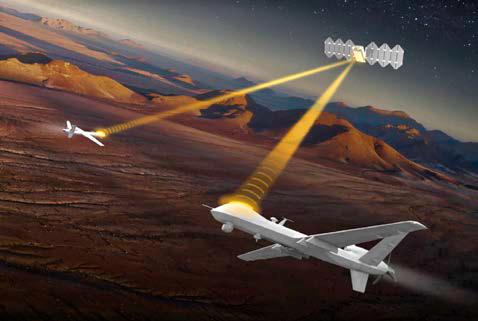
Artistic rendition by CesiumASTRO of a set of
MQ-9A Reapers integrated with CesiumAstro’s
SATCOM terminals.
This contract with the USAF will demonstrate complementary capabilities, showcasing the scalability and dual-use nature of CesiumAstro’s AESA SATCOM terminal.
“Satellite communications are essential to ensure the warfighter remains connected in future operating environments. We’re thrilled to continue working with our U.S. Air Force partners to demonstrate this critical communications solution.”
—Wayne Phelps, retired Marine Corps UAS pilot and Director of Business Development, CesiumAstro
“We are excited to demonstrate the advantages that active phased array satellite communications systems will bring to our family of UAS. This technology is imperative for maintaining a tactical advantage.”
— Douglas Hardison, Sector Vice President for Navy and Marine Corps Strategic Development at General Atomics – Aeronautical Systems, Inc.
Headquartered in Austin, Texas, with offices in Broomfield, Colorado; El Segundo, California; and the United Kingdom, CesiumAstro builds high-throughput, software-defined, phased array communications payloads for airborne and space platforms, including satellites, missiles, UASs, and more. CesiumAstro’s full-stack, multi-mission hardware and software solutions enable a range of commercial, civil, and defense objectives. CesiumAstro provides full in-house design, manufacturing, and testing capabilities based on the ISO AS9100 standard.
GuardianSat™ secures patent for satellite-based automated countermeasure system
GuardianSat™ has been awarded patent number 11662183 for an integrated countermeasure system on satellites that autonomously neutralizes ground, air and space-based, anti-satellite (ASAT) attacks.

Since GuardianSat’s launch in 2020, the company has continued to pursue solutions for space domain awareness (SDA) and defense.
The new technology aligns with GuardianSat’s founding principle of protecting and preserving space by eliminating threats to satellites with space domain defense systems.
The expansion of space commerce has made satellites an essential component of commercial and military infrastructure. However, adversarial nations pose a threat to these satellites as they are valuable targets that can disrupt the Intelligence Community and Space Economy.
The development and testing of ASAT weapons have gone mostly unchecked, making it difficult to defend against them due to the short time between deployment and impact.
GuardianSat is responding to these growing threats by developing a self-contained anti-satellite weapon countermeasure system that can neutralize hostile attacks from the ground, air, and space leveraging this patented technology.
GuardianSat is a generational company founded by Mr. Robert D. Briskman and Mr. Christopher Rohe with indispensable patented technology focused on the protection of orbital assets from growing threats and the improvement of space domain awareness to “Keep Space Open.”
EM Solutions signs acquisition contract to deliver Naval SATCOM solutions
The Australian Commonwealth’s Capability Acquisition and Sustainment Group (CASG) has selected EM Solutions to upgrade the Royal Australian Navy’s SATCOM systems across the existing fleet of vessels.
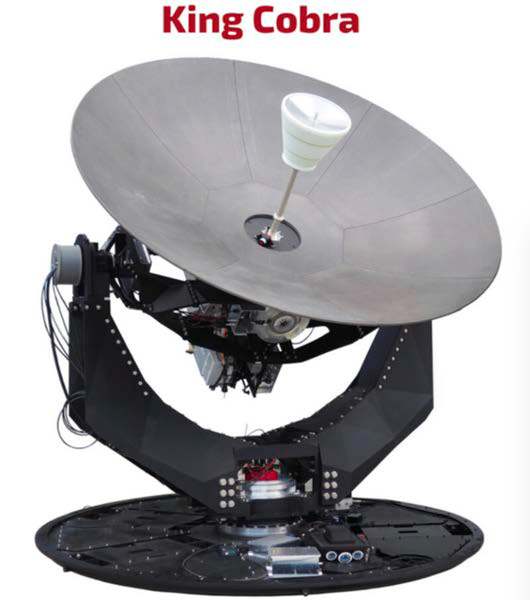
This is, by far, the largest contract ever signed by EM Solutions and demonstrates how support for the Sovereign Defence Industry, particularly Small to Medium Enterprises (SMEs), can deliver world leading capability and enhance sovereign capability.
EM Solutions enters this contract as the Prime Contractor that will initially result in around 30 new positions, some of which have already been filled, at the company’s head office in Brisbane.
EM Solutions is also expanding its local industry supply chain to support, develop and deliver programmatic, integrated logistics services (ILS) and training. The company will continue to work with existing partners and develop new sovereign component and subsystem suppliers for its Naval maritime SATCOM systems.
The acquisition contract is initially valued at approximately $150 million over the next seven years and provides up to a further $50 million in material and service purchases by CASG once the initial program deliverables are approved.
The goal of the contract is to modernize the Primary and Alternate SATCOM for the existing RAN Fleet using EM Solutions’ King Cobra and Cobra SATCOM terminals. The development of each of these terminals has been supported by Australian Defence through the Defence Innovation Hub and earlier Concept Technology Demonstrator (CTD) programs.
This contract does not include ongoing support and sustainment services, however as previously announced in October 2022, EM Solutions already has an existing contract with CASG to support the deployed Cobra systems and those previously acquired for new ship builds.
While the future support of equipment provided under the SEA1442 Phase 5 acquisition contract may lead to additional ongoing revenue to EM Solutions, it will be subject to separate procurement processes and decisions by Defence. EM Solutions has already achieved significant success securing export contracts for its Naval Maritime SATCOM solutions, and with this further vote of confidence from the ADF they are well placed to continue expanding their business with allied Navies, globally.
“The signing of this contract is the result of a close collaboration between EM Solutions and CASG since the announcement in early 2022 that EM Solutions had been selected to respond to a limited release tender for Work Package 1 of the SEA1442 Phase 5 program. It has been a learning journey to ensure the delivery of optimised, cost-effective capability to our sailors in the future. Through a technology evolution program EM Solutions aims to support Navy in managing SATCOM technology evolution and obsolescence management continuously. The trust shown by the ADF in EM Solutions, transitioning from a component supplier to a prime contractor, is a credit to everyone who has contributed to our business to achieve this significant milestone, as with our previous contract negotiations with CASG.” — John Logan, Vice President of Programs, EM Solutions.
EOS launches new “Slinger” Counter-Drone Capability
Electro Optic Systems (EOS) has launched their Australian developed and manufactured counter-drone capability named Slinger.
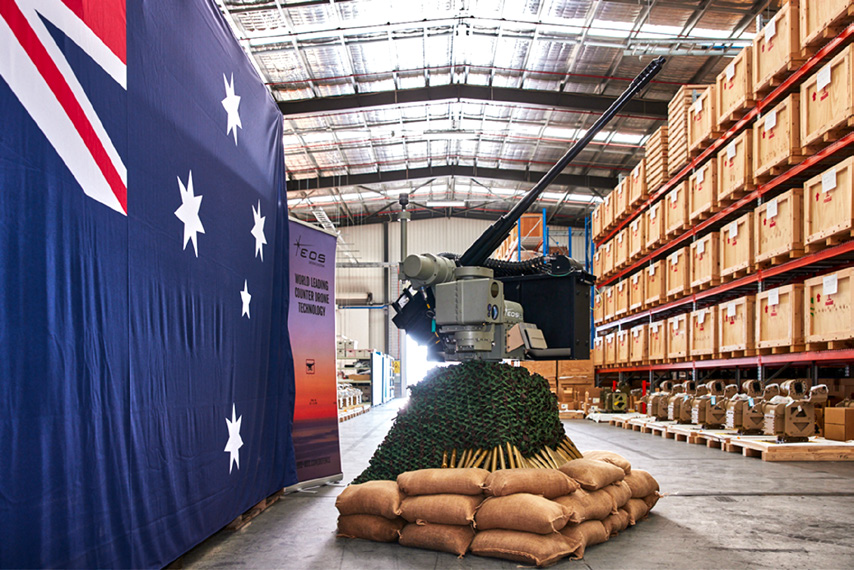
Assistant Minister for Defence, the Honorable Matt Thistlethwaite MP, who officially launched the innovative local technology, said that he continued to be impressed by the capabilities of Australia’s defence industry.
Executive Vice President of EOS Defence Systems, Mr. Matt Jones, said EOS was excited to launch the Slinger in response to growing, international demand for advanced, counter-drone technologies.
“This is a big day for Australia, the Slinger is a cutting-edge capability that demonstrates Australian innovation can lead the world in response to global security needs”, said M.r Jones, who then continued, “We have applied the hard-won lessons from the battlefields, including Ukraine, to our Slinger system, ensuring it will give real edge to those looking to hit back against the growing threat of drones.”
The Slinger incorporates a radar, a 30 mm. cannon with specifically designed ammunition, and EOS’ proprietary stabilization and pointing technology for counter- drone operations.
Slinger can track and discriminately engage moving drones at a range of more than 800 meters, with unique ammunition making the UAS suitable for use in a variety of built-up environments.
The Slinger has been designed and developed in Australia specifically for export markets.
The product focuses on addressing contemporary and emerging threats based on lessons learned in recent conflicts, such as Ukraine.
EOS announced in April that the company has secured two separate conditional contracts worth up to $80 million
(approximately ~A$120 million) and $41 million (approximately A$61 million) respectively to supply its industry-leading weapon systems to Ukraine.
Under the first contract, EOS will provide as many as 100 Remote Weapon Systems (RWS), while the second contract entails up to 50 RWS units.
To fulfill these orders, EOS will leverage its extensive support network and supply chain, which comprises more than 100 suppliers from Australia and other, international locations.
EOS is Australia’s largest, sovereign, defence industry exporter and a trusted provider of advanced military technology to the Australian Defence Force. The company employs approximately 300 staff across Australia, with more than 100 Australian companies in the firm’s supply chain.
Iridium proposes a new model for monitored BVLOS UAS integration
Iridium Communications Inc. (NASDAQ: IRDM) has announced the results of an Uncrewed Aircraft System (UAS) flight trial highlighting Beyond Visual Line of Sight (BVLOS) capabilities in the National Airspace System (NAS), with a published a whitepaper entitled “Monitored BVLOS: A New Model for UAS Integration in the National Airspace System.”

The whitepaper highlights and solves for challenges faced in enabling a safe, scalable, and efficient adoption of UAS in the NAS, including how to maintain safe separation of aircraft and what supportive Commercial Off-the-Shelf (COTS) avionics are readily available.
As part of the flight trial, a Remote Pilot-in-Command (RPIC) drone equipped with Iridium Connected® COTS avionics, identified an intersecting aircraft at five Nautical Miles (NM) of separation with a closure rate of 300 knots. The RPIC successfully performed a BVLOS evasive maneuver in less than 18 seconds from detection to completion, maintaining two NM of separation with non-idealized operations.
Based on this flight trial conducted in partnership with American Aerospace Technologies Inc., Iridium confirmed that a simplified Minimum Equipment List (MEL) could enable an RPIC to safely monitor a mission, communicate with air traffic control, and ensure safe Instrument Flight Rules (IFR) separation from other aircraft.
The results also showed that BVLOS operations are ideal for Class E airspace, as it presents a greatly reduced risk of encountering other crewed Visual Flight Rules (VFR) aircraft. The analysis was completed following the trial flight of a 220-pound, medium altitude, fixed-wing aircraft, known as the AiRanger, over agricultural land near Bakersfield, California.
During the test flight, the team also studied latency, ADS-B distribution, and continuity of communications between satellite, LTE and 900 Mhz Line-of-Sight (LOS) radio links. It was found in this specific location – 1,500 feet above ground level. The reliability of Iridium® satellite communication was superior to the LTE link and the RPIC preferred the aircraft command responses over satellite communication versus the900 Mhz LOS radio.

Photo of the AiRanger in flight, courtesy of American Aerospace.
Expansion of this flight trial using a broader range of equipment and scenarios that further enhance an MEL – as well as a more efficient waiver submission process – could present certification agencies and operators with a scalable path forward for monitored BVLOS operations. The results of the test flight demonstrate that a segment of the drone market could successfully scale in linear inspection with fixed- wing aircraft in rural and remote regions, bringing faster innovation in technology and realized efficiency to the respective industries they serve.
The flight trial provided needed data regarding how RPIC operations and procedures inform decision- making, how long maneuvers take to complete over BVLOS communication links, and as a result, the ability to maintain safe separation. With these points in mind, the whitepaper suggests a simplified, Federal Aviation Administration (FAA), BVLOS waiver process inclusive of the recommended MEL and provides a proposed template for consideration.
“With a standardized and simplified BVLOS waiver process, we are confident the drone industry could take advantage of the proven and now recommended MEL. Applying a BVLOS MEL in Class E airspace when flying in low-density population or rural or remote areas would be a great step toward dramatically increasing innovation and operational efficiency.” — John Peterson, Executive Director of Aviation, Iridium
“The Iridium network opens the door to a variety of new use cases for UAS that can be remotely piloted from a distant command center.” — David Yoel, Founder and CEO, American Aerospace.
iDirect Government names an interim President
iDirect Government (iDirectGov) has announced that Tim Winter has been named interim president by the iDirect Government Proxy Board, replacing John Ratigan, effective April 3rd.

Previously the Vice President of Global Accounts and Global Government and Defense at ST Engineering iDirect, the parent company of iDirect Government, Winter managed its strategic global account engagements and captured pursuits for international defense opportunities. Prior to joining ST Engineering iDirect, Winter managed businesses across the defense industry at L-3 Communications and Northrop Grumman.
Before transitioning to industry, Winter flew P-3 Orion aircraft as a Naval Flight Officer on active duty for eight years. He continued his service in the United States Navy Reserves, flying P-3 aircraft and the BAMS-D UAV through 2022. He retired from the U.S. Navy with the rank of commander in 2022. Winter is a Naval Academy graduate and has a master’s degree in business administration from Georgetown University.
Ratigan served as president of iDirect Government for 20 years, managing the U.S. Department of Defense business and was instrumental in the company’s growth, bringing advanced satellite communications used for voice, video, Internet, imagery and data to military, homeland security, first responders and other government users.
“I am both honored and grateful for this opportunity and look forward to building upon the strong legacy of iDirect Government,” said Winter. “I am excited to lead our team with a continued dedication and service to the most important customers in the world.”




